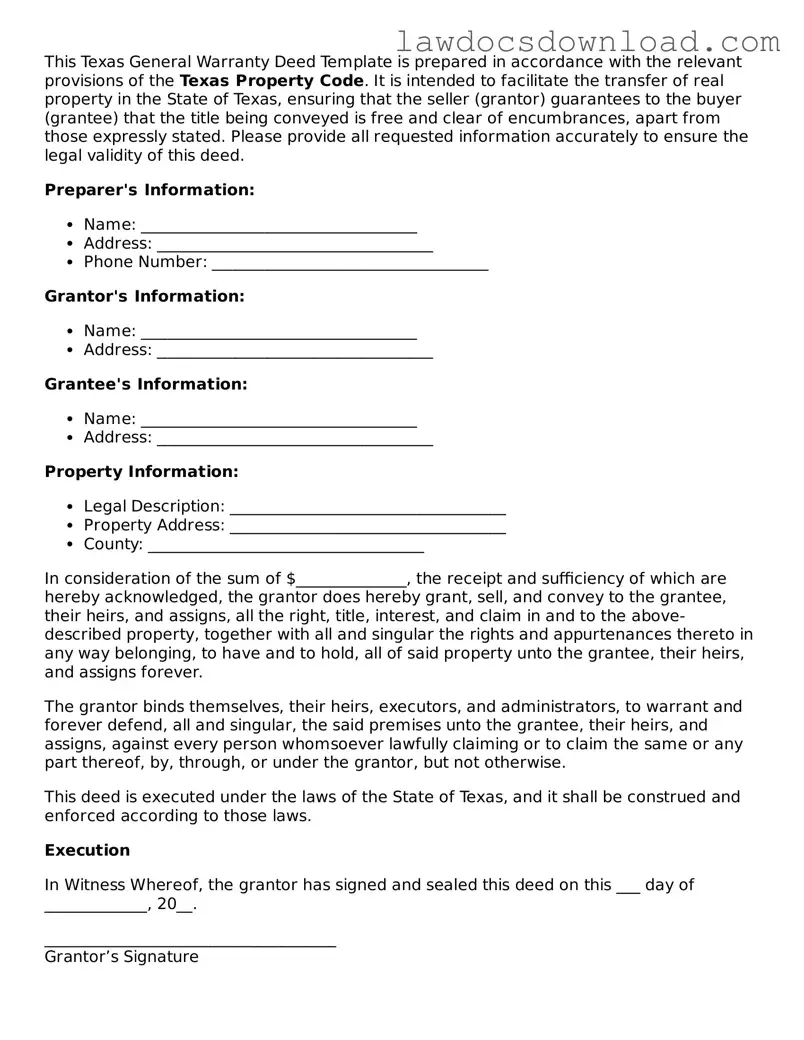This Texas General Warranty Deed Template is prepared in accordance with the relevant provisions of the Texas Property Code. It is intended to facilitate the transfer of real property in the State of Texas, ensuring that the seller (grantor) guarantees to the buyer (grantee) that the title being conveyed is free and clear of encumbrances, apart from those expressly stated. Please provide all requested information accurately to ensure the legal validity of this deed.
Preparer's Information:
- Name: ___________________________________
- Address: ___________________________________
- Phone Number: ___________________________________
Grantor's Information:
- Name: ___________________________________
- Address: ___________________________________
Grantee's Information:
- Name: ___________________________________
- Address: ___________________________________
Property Information:
- Legal Description: ___________________________________
- Property Address: ___________________________________
- County: ___________________________________
In consideration of the sum of $______________, the receipt and sufficiency of which are hereby acknowledged, the grantor does hereby grant, sell, and convey to the grantee, their heirs, and assigns, all the right, title, interest, and claim in and to the above-described property, together with all and singular the rights and appurtenances thereto in any way belonging, to have and to hold, all of said property unto the grantee, their heirs, and assigns forever.
The grantor binds themselves, their heirs, executors, and administrators, to warrant and forever defend, all and singular, the said premises unto the grantee, their heirs, and assigns, against every person whomsoever lawfully claiming or to claim the same or any part thereof, by, through, or under the grantor, but not otherwise.
This deed is executed under the laws of the State of Texas, and it shall be construed and enforced according to those laws.
Execution
In Witness Whereof, the grantor has signed and sealed this deed on this ___ day of _____________, 20__.
_____________________________________
Grantor’s Signature
_____________________________________
Grantor’s Name Printed
State of Texas
County of __________________
This instrument was acknowledged before me on _____ (date) by __________________ (name of grantor).
_____________________________________
Notary Public’s Signature
_____________________________________
Notary’s Printed Name
My commission expires: _______________
